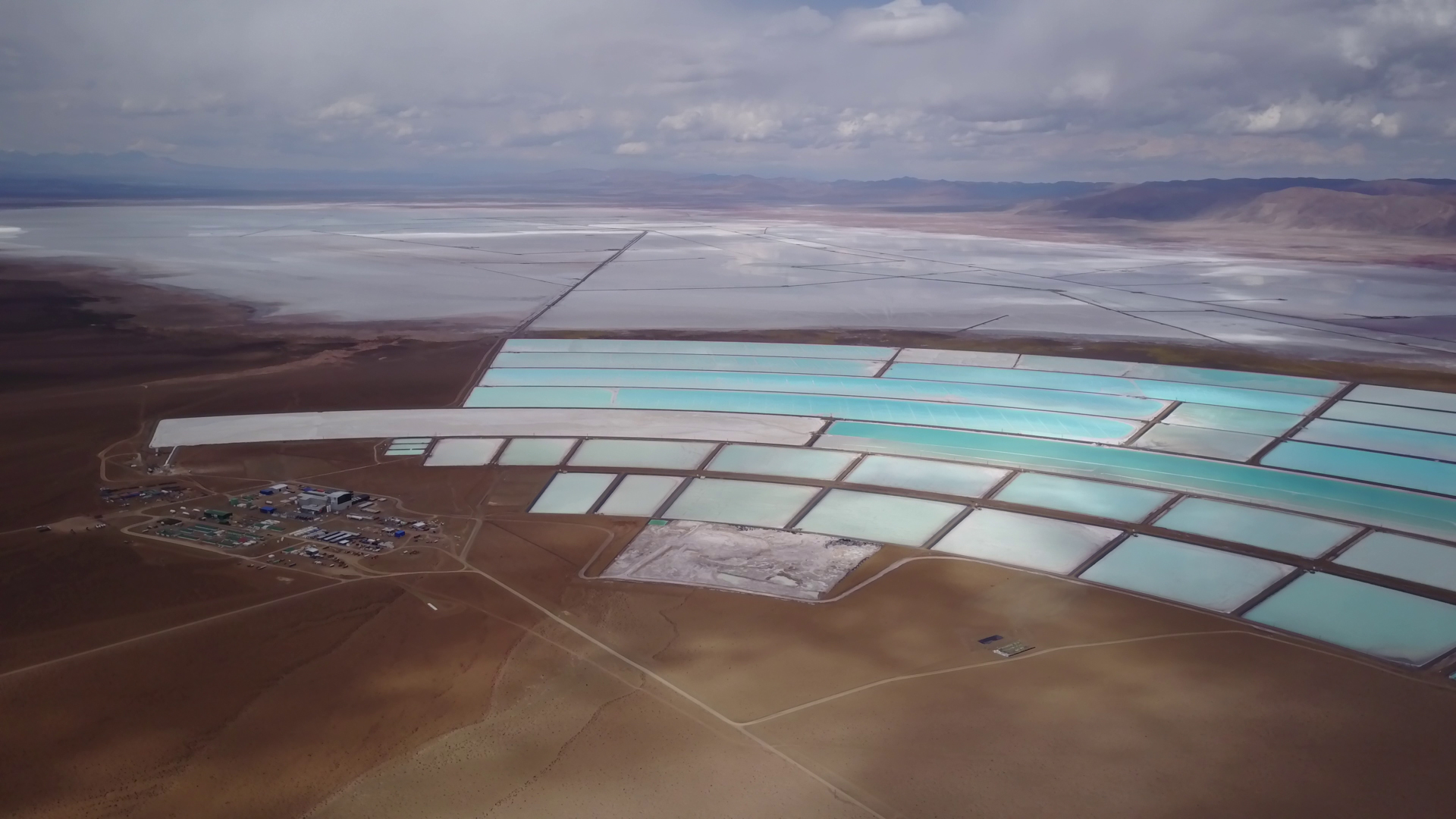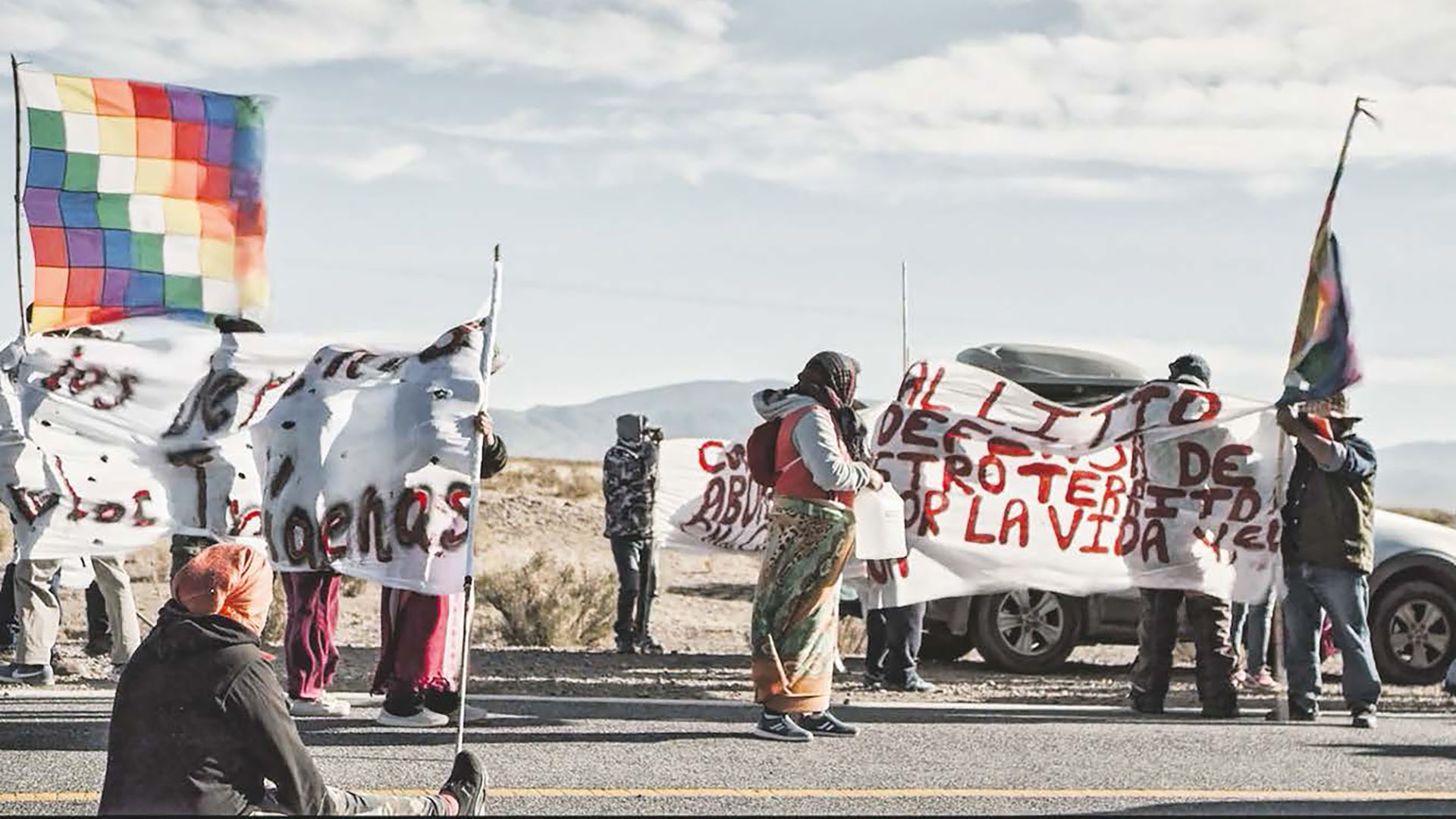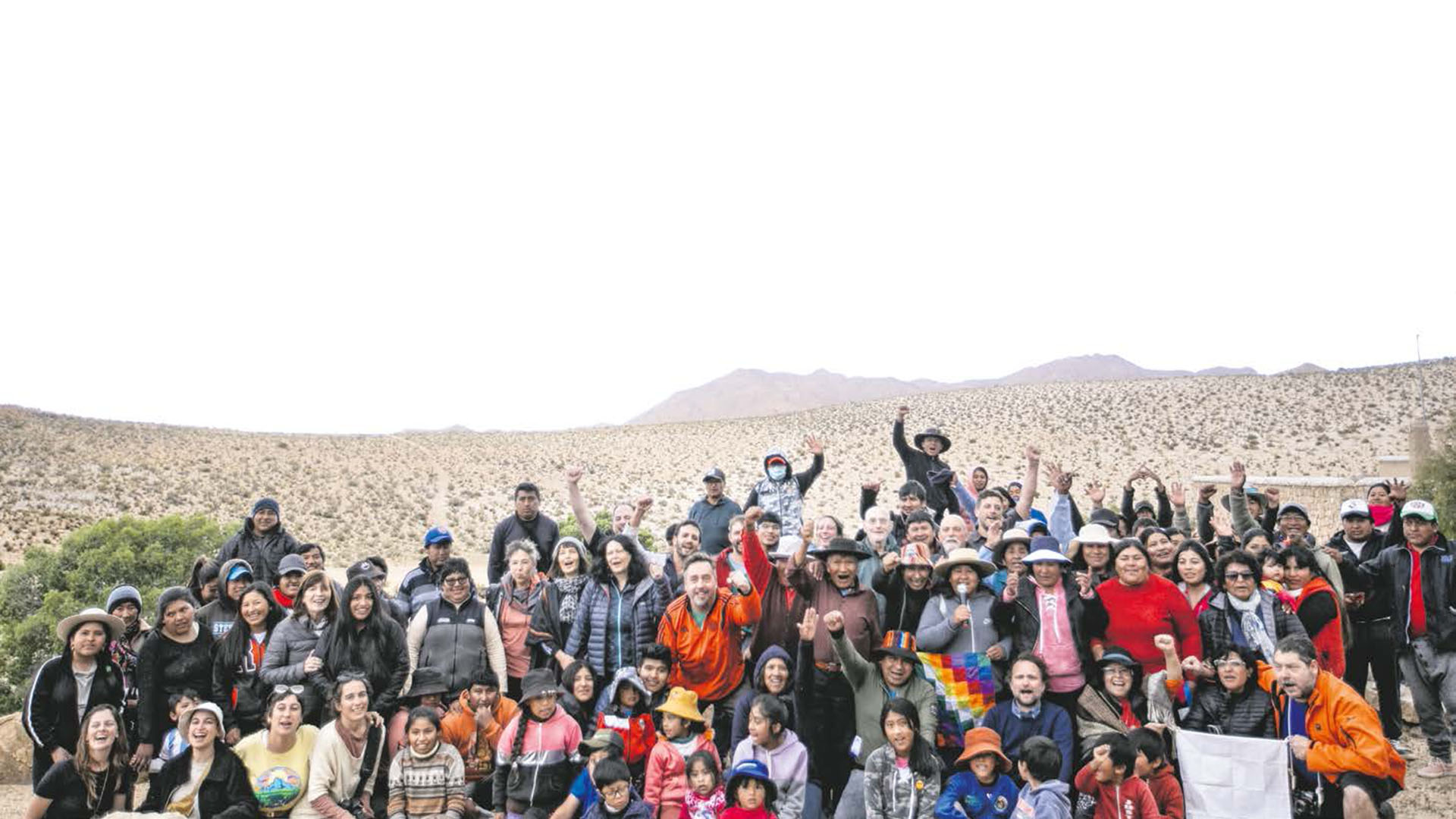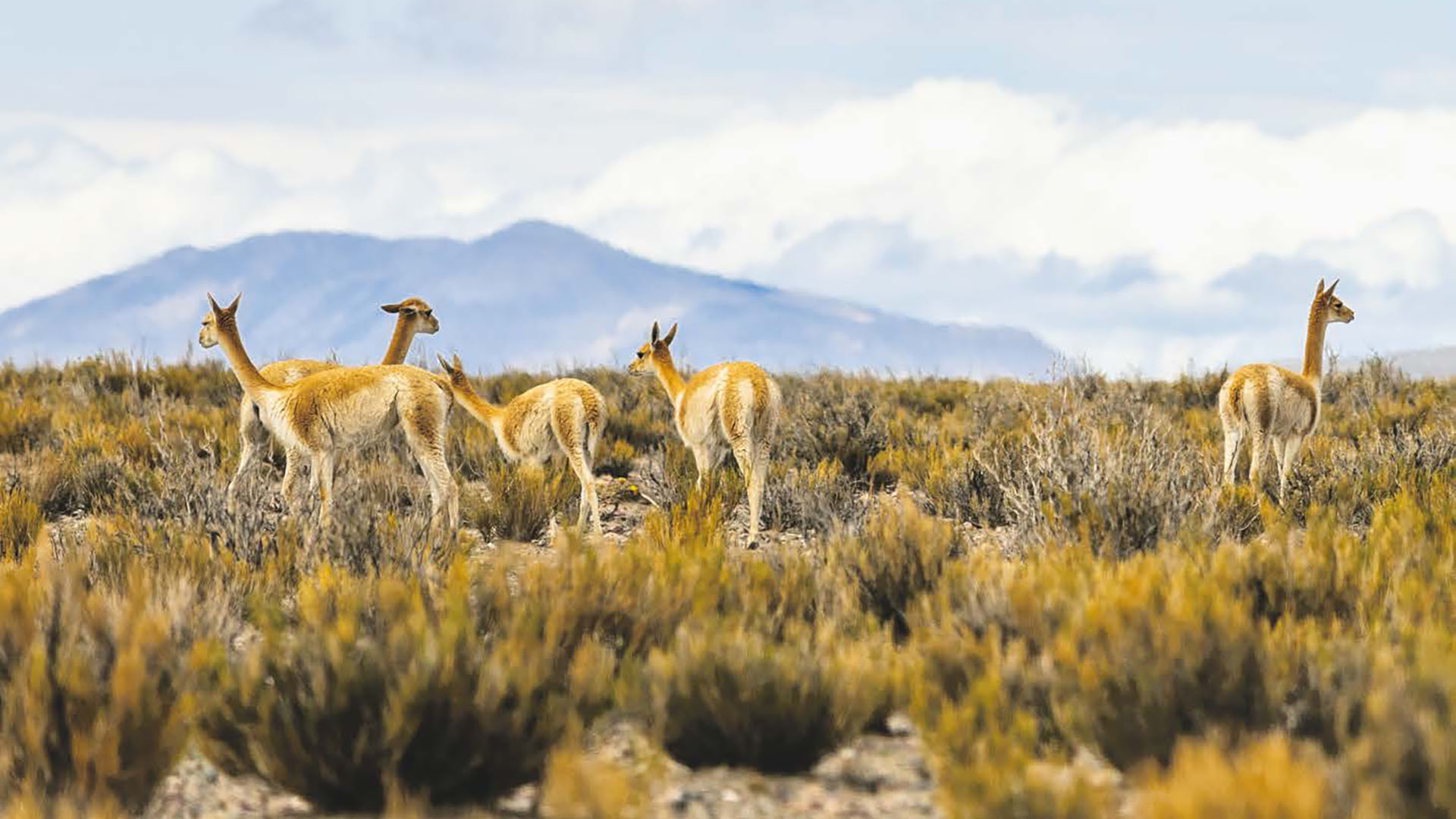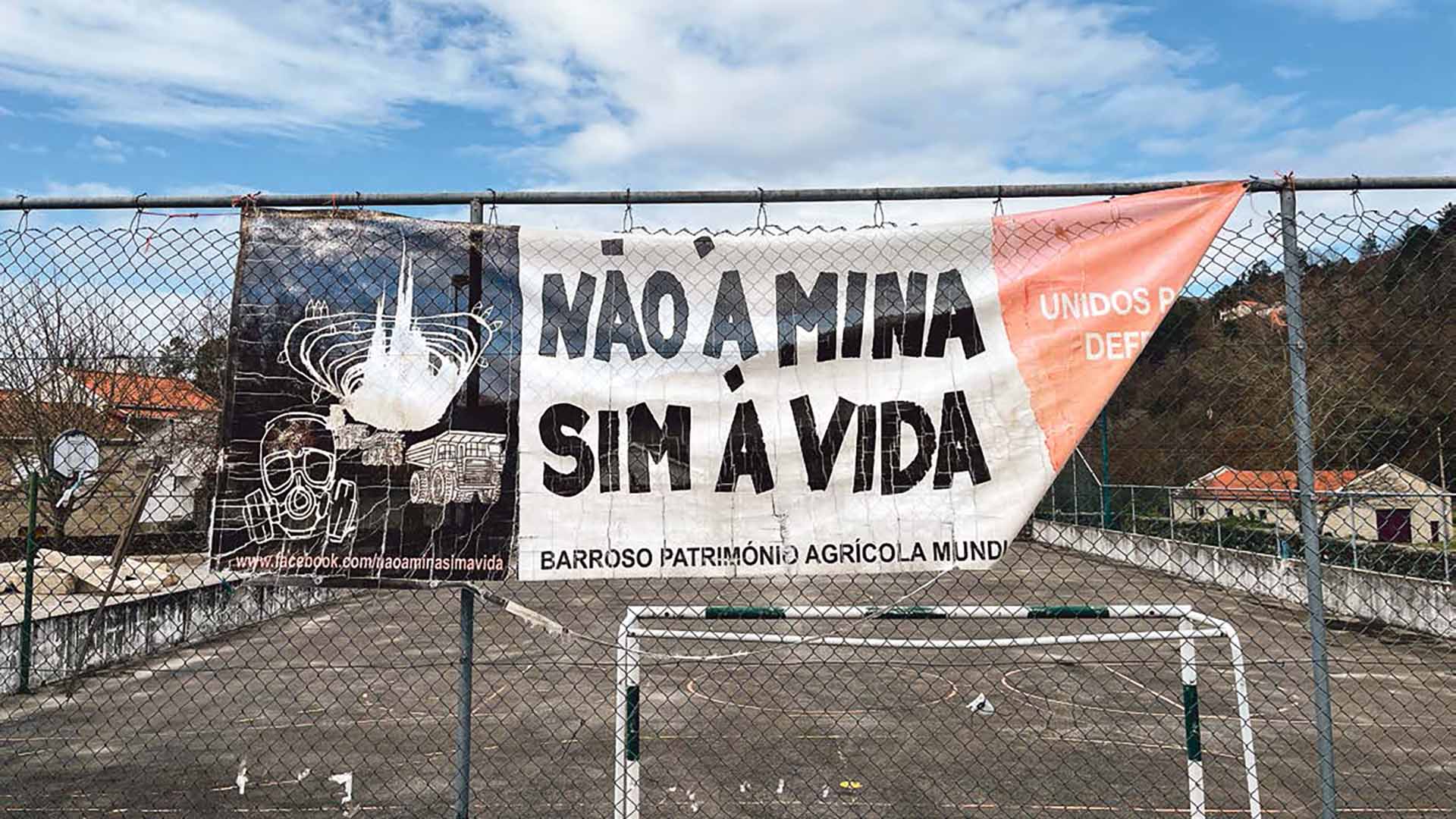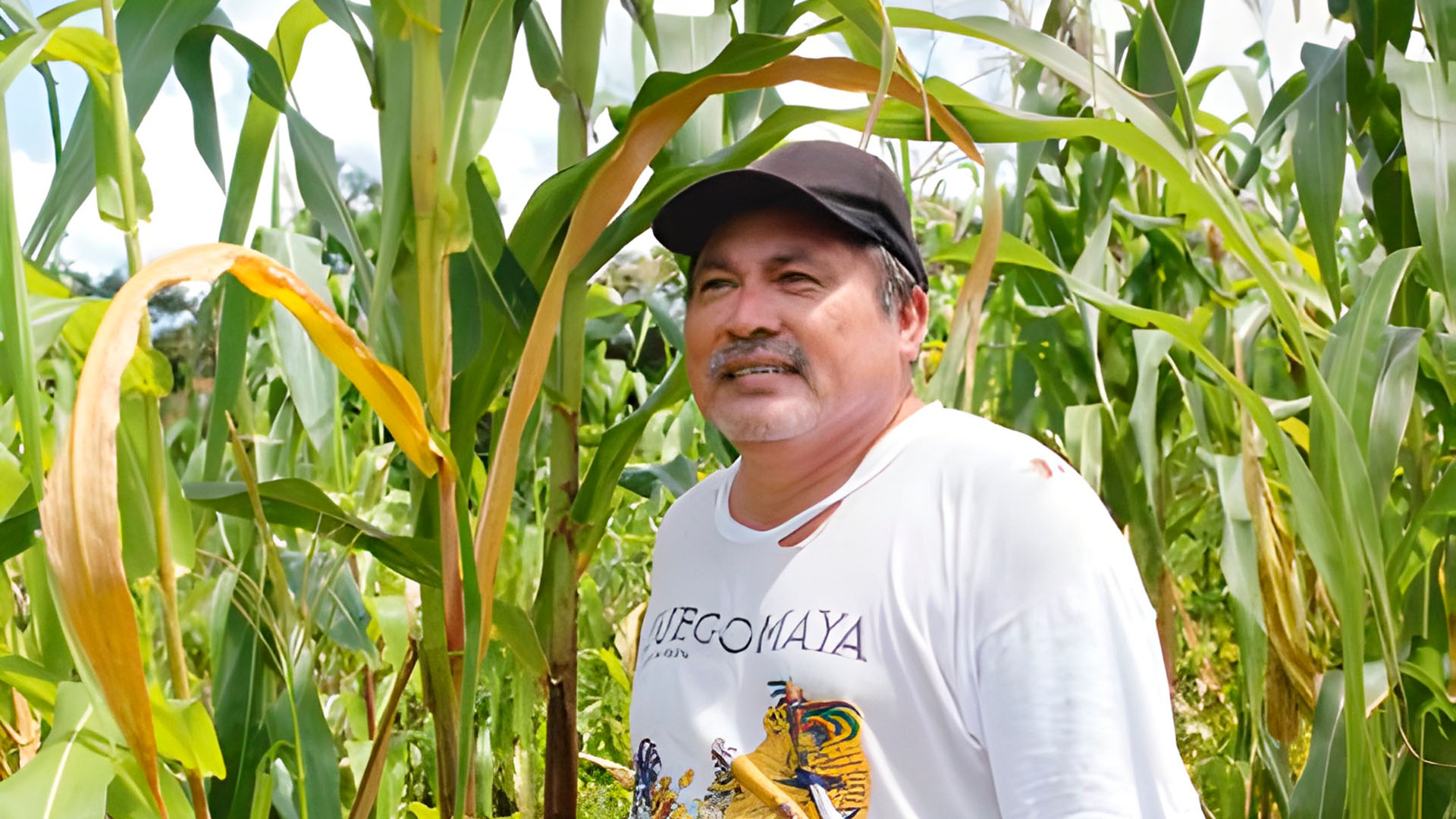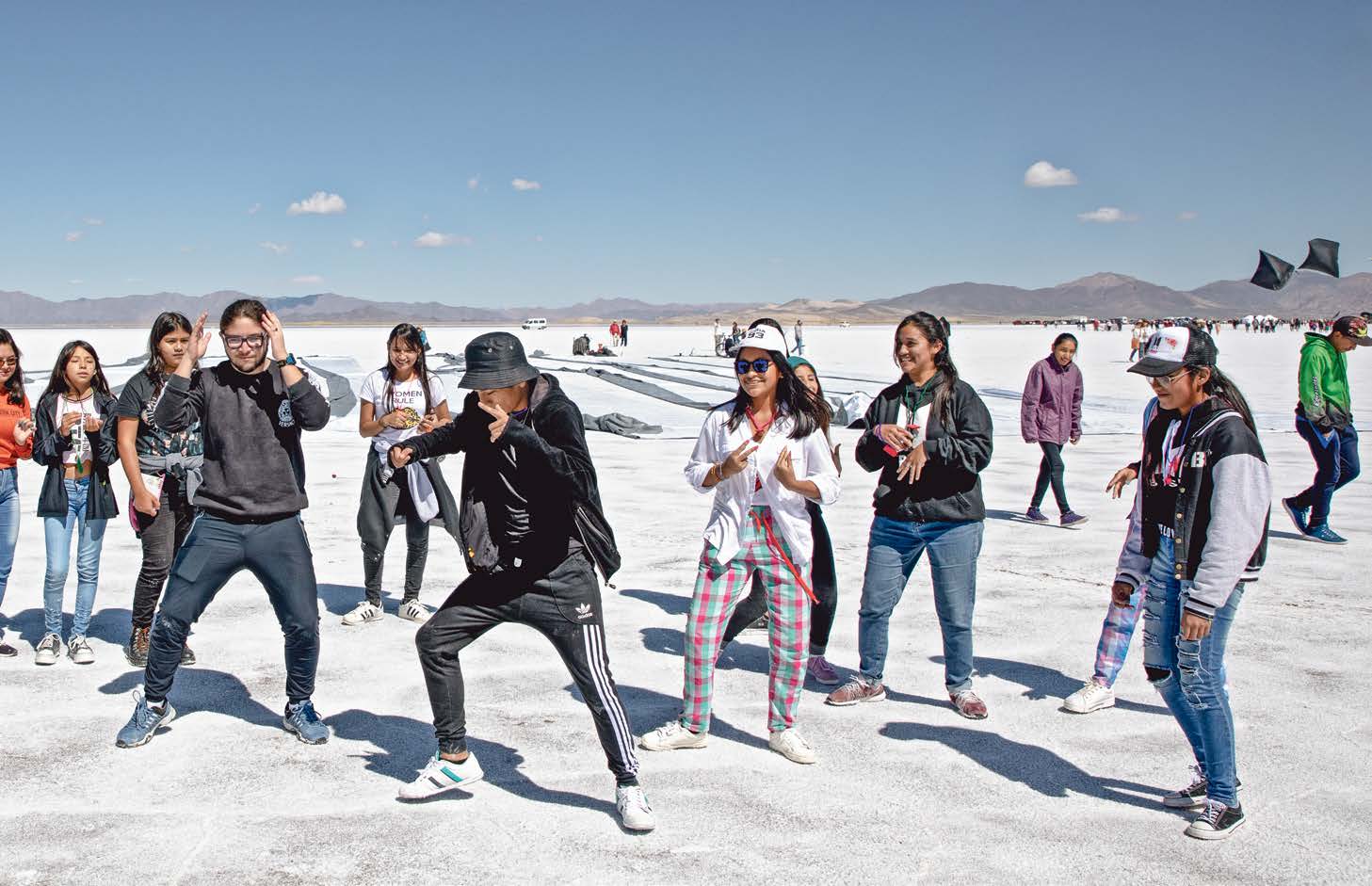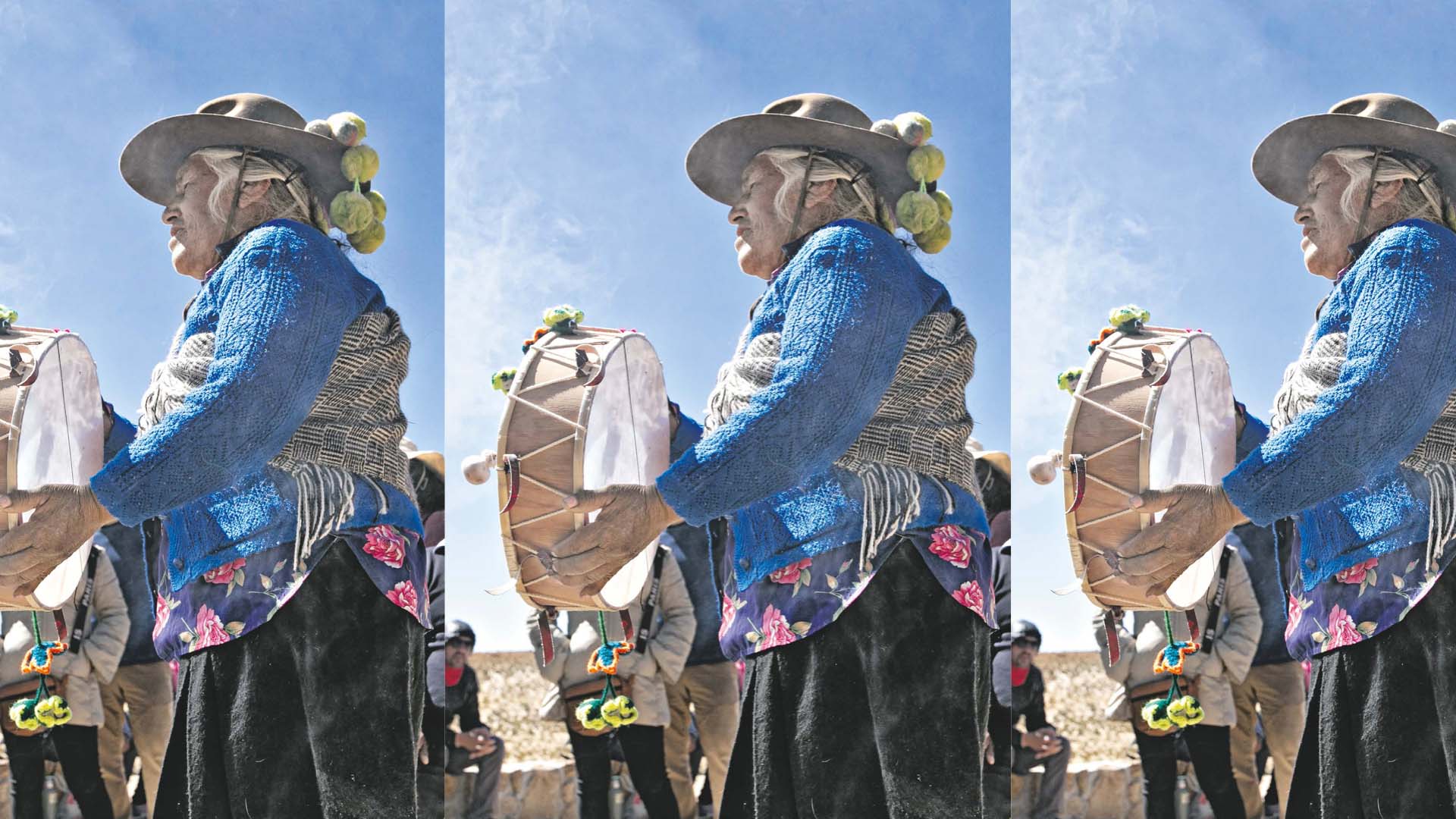Lithium as a field of dispute
Three years after the onset of the COVID-19 pandemic, the ‘new normal’ has emerged with signs of chaos and instability. This new global status quo reflects the worsening of several intertwined crises – social, economic, political, ecological, health and geopolitical – which also have a civilisational dimension. In the midst of this polycrisis, we live with the constant danger of rapid escalation between these dimensions.
The war in Ukraine exacerbated both traditional extractivism and new extractivism associated with the corporate ‘green transition’. As we say in the Manifesto for a Ecosocial Energy Transition of the South:
What’s new about this current moment is the ‘clean energy transitions’ of the North that have put even more pressure on the Global South to yield up cobalt and lithium for the production of high-tech batteries, balsa wood for wind turbines, land for large solar arrays, and new infrastructure for hydrogen megaprojects. This decarbonization of the rich, which is market-based and export-oriented, depends on a new phase of environmental dispossession of the Global South, which affects the lives of millions of women, men, and children, as well as non-human living beings.
In this way, the Global South has once again become a zone of sacrifice, a basket of purportedly inexhaustible resources for the countries of the North.
In geopolitical terms, the issue of lithium extraction in Latin America is a privileged window, a leading case, to analyse this type of transition, which is corporate, neocolonial and unsustainable. It has been claimed innumerable times that lithium is the master key for the energy transition, because as a final product, Ion-Lithium batteries are used for the development of electric cars, so are necessary to get out of fossil fuel-based mobility. 58% of the global lithium resources and 53% of the reserves are concentrated in Argentina, Bolivia and Chile in high Andean salt flats. This concentration has unleashed enormous pressure from international capitals and from central countries. It is a battle for control of resources, as well as for control of knowledge in the global value chain.
In this context, the trend is towards a type of corporate energy transition. Thus, there are actors who, confronted with the climate situation, are seeing in the energy transition potential for wealth accumulation and geopolitical hegemony positioning. Beyond the business sphere, the corporate-energy transition may have diverse supporters such as multinational companies, states (in their multiple scales), institutions and organisations. Many defend this concept as the fastest way to respond to the urgency of the crisis, based on the idea of technological efficiency, the trivialized idea of ‘sustainable development’ and the ‘green economy’. That is, on continuing the path of growth without limits, of exchanging fossil resources for renewable and high-tech resources, without modifying the capitalist consumption logic. Moreover, it does not question the distribution or access to energy for populations, or citizen participation in decision-making processes.
An inherent characteristic of the energy system is its concentration. Large companies, not only private, but in many cases public, hold the hegemonic power. At the end of the global value chain are all the auto giants (Toyota, BMW, VW, Audi, Nissan, General Motors), electrical firms like Vestas and Tesla. 50% of the batteries for the automotive industry are concentrated in companies in China and Japan. Added to this, the control of the extraction is also dominated by a few companies: the American Albemarle, the Chilean SQM, the North American Livent Corp, Orocobre of Australia, and Ganfeng of China.
Lithium extraction is different from metal mega-mining since it does not involve removing tons of earth and dynamiting mountains. However, the main problem with lithium is that it is fundamentally water mining. Its extraction in brine requires the consumption of unsustainable amounts of water in an arid region. This puts at risk the fragile ecosystem of the desert, its wildlife and the livelihoods of the people who live there, especially Indigenous communities. On the other hand, a commodity (lithium carbonate), without added value, is exported. From Argentina or Chile, there is no control of the global lithium chain from salt flats to batteries.
The fact is that in Argentina, as well as in the Atacama region of Chile, lithium extraction threatens to break the fragile water balance. It tends to dry up aquifers and water reserves in areas that are already characterised by aridity and hydric stress. It also competes for water with the agricultural and grazing activities of the local Indigenous communities that have inhabited the territory for millennia, while threatening biodiversity. The impact of lithium mining in the Atacama region of Chile is so great that it was one of the issues discussed by the International Tribunal on the Rights of Nature, held in Chile in December 2019.
In many cases, lithium extraction has advanced without social licence, that is, without the agreement of or consultation with the communities. In Salinas Grandes, Jujuy, Argentina, the thirty-three communities do not want lithium extraction to take place in their territories. On the balloon that artist Tomàs Saraceno raised in January 2020, shortly before the pandemic, was the slogan ‘Water and Life are Worth More than Lithium’. In January 2023, we travelled with Saraceno and several Argentine writers, environmental lawyers and social scientists to the heart of the puna, Alfarcito, where after two days of intense exchange and dialogue of knowledge, we attended a meeting of the Indigenous communities declaring the basin of the Salinas Grandes and the Guayatayoc Lagoon a subject of rights. They defend a holistic and ancestral perspective, the relational narrative link to ideas such as Good Living, Territory, Autonomy, Plurinationality, Water and Sustainabilty. The salt flats are considered by Indigenous people as ‘a living being, as a giver of life.’
The post-fossil transition cannot be used as an excuse for consolidating or continuing to maintain consumption models that are openly unsustainable. It is not enough to replace fossil-fuel based cars with electric cars. It is necessary to reduce consumption and move towards public and shared mobility models, so that they become sustainable. The fact that lithium batteries, as well as wind and solar projects, also require minerals (such as copper, zinc, among others), warns us of the need to carry out a radical reform of the transportation system and, in general, of the consumption model. Even a World Bank report notes that the production of minerals such as graphite, lithium and cobalt, could result in an increase of nearly 500% by 2050, to meet the growing demand for clean-energy technologies. It is estimated that more than 3 billion tons of minerals and metals will be required for the implementation of wind, solar and geothermal energy, as well as energy storage, to achieve a temperature reduction below 2°C in the future.
It is not that we in the global South do not consider the decarbonisation process important, but that decarbonisation must point to a way out of commodification and not consolidate new forms of extractivism and areas of sacrifice in the global South. People in resistance have called these ‘false solutions’, supported by energy colonialism or ‘green extractivism’.
Our perspective
I consider it essential for the North to address a process of degrowth and to confront the ecological debt it owes to the peoples of the South. The global North must degrow its consumption, contract the market sphere, dematerialise production, among other measures. As anthropologist Jason Hickel said in Less is More, How Degrowth can Save the World, degrowth calls for rich nations to scale down throughput to sustainable levels, reducing aggregate energy use to enable a sufficiently rapid transition to renewables, and reducing aggregate resource use to reverse ecological breakdown. This demand is not just about ecology; rather, it is rooted in anti-colonial principles […] In the face of ecological breakdown, solidarity with the South requires degrowth in the North.
The complement of degrowth must be the payment of the ecological debt. No climate justice or socio-ecological transformation is possible without including reparations for these debts, because ecological debt and external debt are intrinsically linked. The COVID-19 pandemic highlighted the debt problem and the urgent need for real solutions and not just temporary and very short-term relief. However, the recognition of the ecological and climate debt cannot be used to absolve the models of underdevelopment that are deployed in the territories of the global South, blocking any criticism of them, as well as the discussions that are proposed from below (socio-environmental organisations and activists) on the ecosocial transition. In fact, there is nothing more colonial than passively accepting the role assigned to Latin America as a global supplier of raw materials, as if this were a destiny and not a global geopolitical decision, even if it is done on behalf of the green transition.
The energy transition must be thought from an integral perspective that contemplates the different dimensions that comprise it: technical, social, economic, environmental, political, cultural; that inserts the geopolitical aspects of the debate: tensions, conflicts and relations of inequality in the progress of the transition between countries of the North and emerging countries, with respect to the countries of the South; and finally, that places the emphasis on the situation of contemporary Argentina, and more generally, on the Latin America region.
Our starting point is to think of energy as a right and a common good. In fact, almost all of it comes from the mother source, the sun, the webs of life, as Saraceno´s work shows. Energy has traditionally been considered a strategic natural resource and currently there is a predominant effective use that, quite contrary to its evident relational and collective character, treats its sources as commodities, thus tying it to market dynamics. Under these conditions, the treatment of the energy issue requires an integral, multidimensional and interdisciplinary approach, also crossed by geographical (global, regional, national, local) and temporal (short, medium and long term) variables.
It is also a matter of answering more elementary questions. For example, why is a change in the energy system necessary? What does it mean and what is the scope of the ‘energy transition’ in this context? What are the models and proposals under discussion and in dispute regarding what is understood as energy transition? Is it possible to dissociate the energy transition from a more comprehensive ecosocial transition? What does it mean to transform the current energy system? For whom should we produce energy and why? Who will pay the costs of the energy transition? How is the energy transition crossed by interests, positions and asymmetries of political and class actors? What are the limits of those energy sources that today are presented as clean and renewable? What does the energy transition have to do with participation from below and more specifically with democracy? What is happening in South America with the energy transition?
In short, we understand that the ecosocial transition must be associated with global climate justice. The COVID 19 pandemic, caused by a zoonotic virus, revealed the responsibilities of models of underdevelopment (deforestation, encroachment on wild ecosystems, large-scale animal husbandry, among others). It also revealed our vulnerability as humanity, revealing the need to reformulate our relationship with nature in order to protect the fabric of life. It is no coincidence that since 2020, proposals for an ecosocial transition have been promoted and, particularly from the North, the concern for achieving the energy transition to a post-fossil fuel system has been emphasized. However, as we see in the case of lithium, one of the greatest risks is that in a context of accelerating systemic collapse, and with regard to the roadmap of energy transition, is that we in the global South continue to be spoken for by the governments of the North, for and from the position of a corporate, neocolonial and unsustainable transition, which touts the virtues of green energy while neo-extractivism, inequalities and violations of the rights of our populations and territories are accentuated.
This essay was originally published by Ivorypress within ‘Tomás Saraceno in collaboration: Web(s) of Life’ (2023) in the framework of an exhibition at Serpentine Galleries, London.
[1] Ecosocial and Inter-cultural Pact of the South, Manifesto for an Ecosocial Energy Just Transition from the Peoples of the South, 2023, https://pactoecosocialdelsur.com/manifesto-for-an-ecosocial-energy-transition-from-the-peoples-of-the-south/
[2] M. Argento, A. Slipak and F. Puente, El litio y la acumulación por desfosilización en Argentina, in M. Svampa and P. Bertinat, La transición energética en Argentina (Buenos Aires: Siglo XXI, 2022).
[3] World Bank, Minerals for Climate Action: The Mineral Intensity of the Clean Energy Transition, 2020, https://pubdocs.worldbank.org/en/961711588875536384/Minerals-for-Climate-Action-The-Mineral-Intensity-of-the-Clean-Energy-Transition.pdf
[4] J. Hickel, Less is More, How Degrowth can Save the World (London: Verso, 2020).
[5] M. Svampa and E. Viale, El colapso ecológico ya llegó. Una guía para salir del (mal) desarrollo (Buenos Aires: Siglo XXI, 2020).
